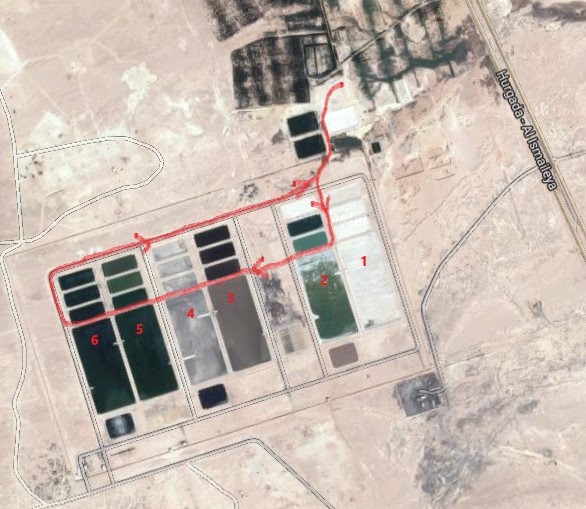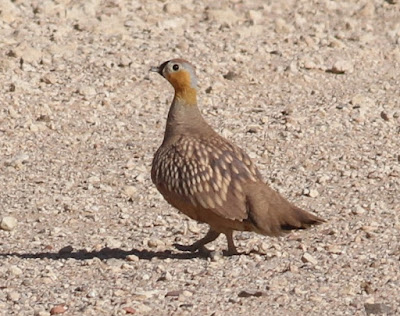My route is marked in red, and I have labelled the settling tanks arbitrarily.
The two ponds north of the main tanks were fringed with reeds and the green areas to the north were also interesting, but too large for me to cover in the time I had. There were areas of dense reed-beds, interspersed with lines of trees, and some bare ground.
I was walking from tank 4 towards tank 5 when I heard the characteristic twittering call of sandgrouse. I quickly got on to a small group flying in. Over the next 10 minutes at least 6 further groups arrived, totalling perhaps 70 birds in all. Most were Spotted Sandgrouse like these...
...but there were at least two pairs of Crowned Sandgrouse in amongst them. They came in to drink at the northern ends of both tanks 5 and 6
In the smaller ponds north of tank 6 were a large mixed flock of gulls. Mostly they were Lesser Black-backed Gulls of at least two forms (fuscus and graellsi), as well as possibly some Caspian Gulls. They were very nervous and did not allow a close approach at all. As I was leaving however, this magnificent beast flew in, an adult Pallas' Gull (previously known as Great Black-Headed Gull, or GBH Gull)
Several Western Marsh Harriers in the reeds north of the main sewage farm. One adult Hen Harrier here too.
Eurasian Sparrowhawk powering through.
Red-rumped Swallow
Whiskered Tern. A Caspian Tern also dropped in for a short while.
Little Ringed Plover









No comments:
Post a Comment